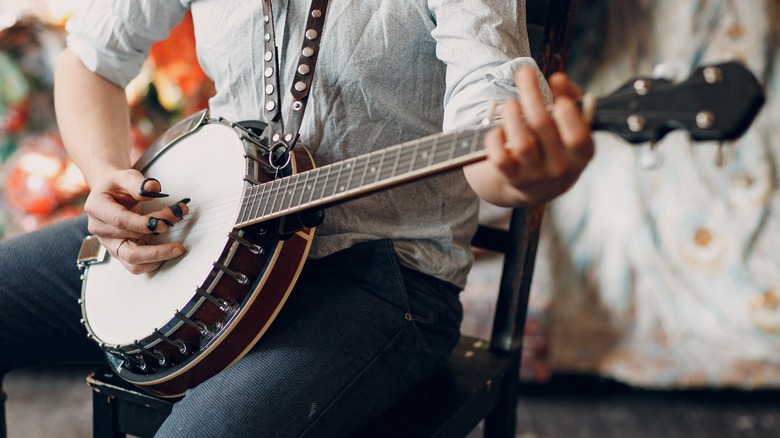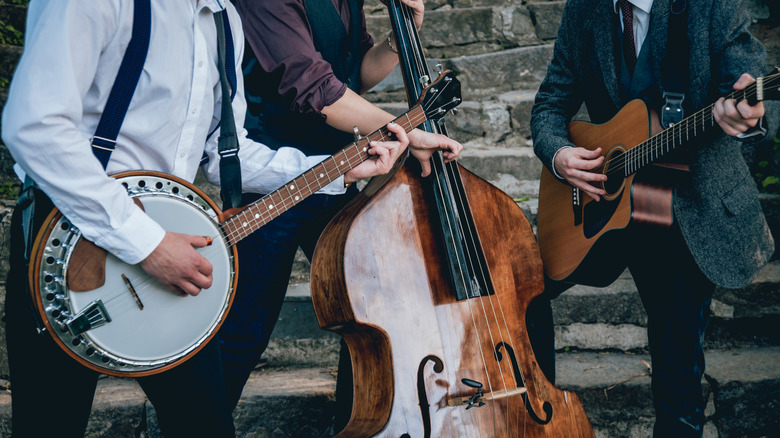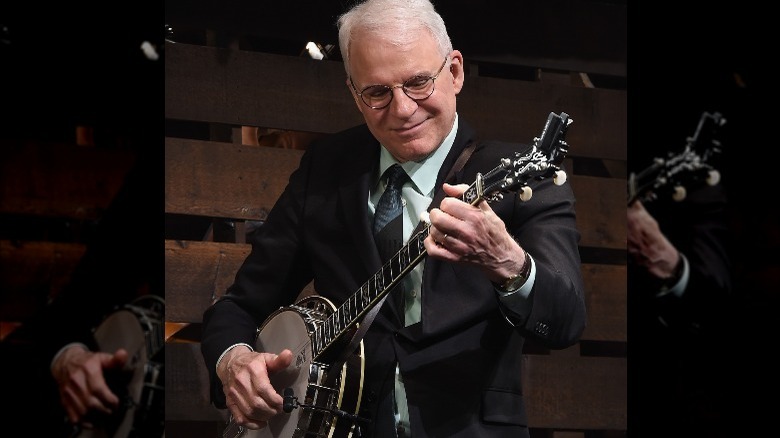Why Music Theorists Say The Banjo Can Never Sound Sad
With roots in Africa, the banjo is perhaps most closely associated with styles of American music like country, folk, and bluegrass, according to Smithsonian Music. Early on, banjo was also used in jazz, according to Banjology from Duke University. Like all genres of music, there are sad and happy songs written in all four of those styles, and many examples of each type of music feature the banjo. More often than not, though, banjos are associated with happy music written for celebration and dancing.
Could that link between happy energy and the banjo have something to do with the instrument itself, or could there be something about the banjo that makes it better suited for playing happy tunes rather than sad ones? According to the Empirical Musicology Review, in 2014 two researchers from the University of Ohio State University and one from University of Virginia teamed up to find out if that might be the case.
Sad instruments sometimes sound like sad speech
According to "You Can't Play a Sad Song on the Banjo: Acoustic Factors in the Judgment of Instrument Capacity to Convey Sadness," published on Empirical Musicology Review, instruments most often associated with sad music tend to produce sounds that mimic sad speech, a feeling defined by the researchers in the study as depressed and empty instead of "a wailing sort of grief." Based on the study, research suggests that instruments that are able to play slow and quietly and at a lower pitch, among other aspects of the timbre, tend to sound sad to listeners.
The same can be said for how sad people sound when they speak. Through this research it was also found that more often than not, stringed instruments like the viola sound most sad to listeners due to the instrument's capacity to produce tones of that nature. Notably, slow, quiet and at a low pitch, are also not often used to describe the sounds made by banjos, whether four-string tenor jazz banjos, five-string bluegrass banjos, or the rest of the variations of the instrument.
Science says banjos simply sound happy
To reach their conclusions in the study, the three researchers asked participants to respond to two surveys. From a field of 44 instruments, the first survey asked how often each instrument was used to play a sad song, while the second question asked their opinion how capable the instrument was of producing sad sounds. According to those results, music written for the violoncello is most often sad, while music written for the snare drum is typically the opposite.
The three researchers then asked participants to rank how capable each instrument was of playing tones, tempos, and at volumes most often linked with sad music. In those results, the acoustic guitar ranked the most able to play a sad song, while the wood block landed on the other end of the spectrum. In both survey results, the banjo also ranked near the top for an instrument best suited to play happy music and the least capable of producing sad sounds (per Empirical Musicology Review). So the next time you listen to bluegrass music with banjo and find yourself inclined to clap and dance, just know — science is on your side.


